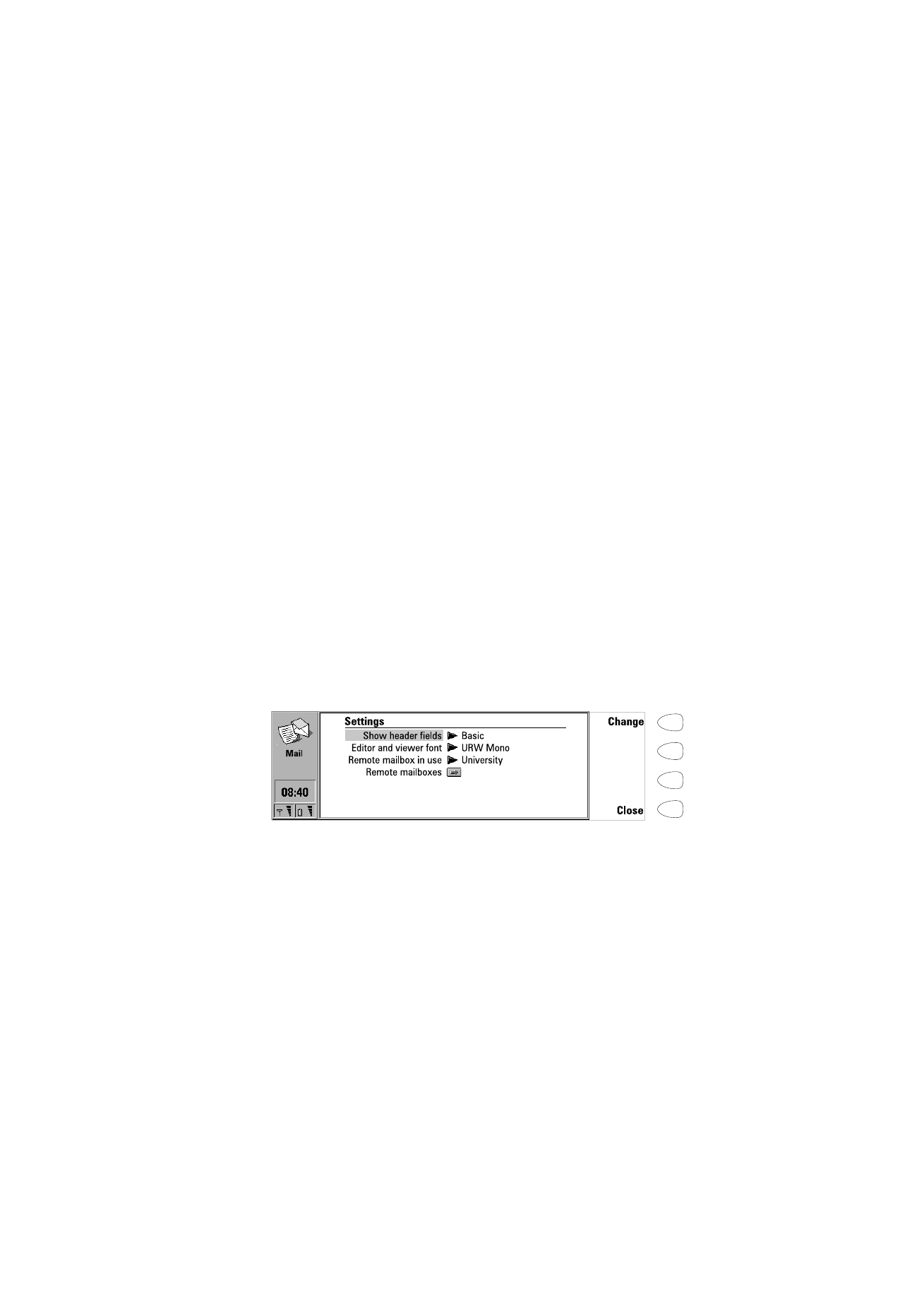
To define an Internet access point
1 In the Internet settings main view choose Internet access and press
Change.
2 To define a new Internet access point, press New. To modify or change an
existing IAP, press Edit.
Tip: There is a glossary of
Internet terms and abbreviations
at the back of this manual.
Note: The Internet settings
apply to Mail, WWW and
Telnet.

In
te
rn
et
87
1999 Nokia Mobile Phones. All Rights Reserved.
The Internet settings are:
Modem initialisation — Enables you to define the modem settings of your
communicator:
Autobauding — The data transmission rate is determined automatically.
Most networks support this option.
Fixed 9600 b/s — A fixed data transmission rate is used. If you have
problems with making a data call, try this option.
Fixed 14400 b/s — Can be used if supported by the network. Do not use this
option, unless you are sure your network supports it.
Custom — When a data call is established, the modem is initialised
according to the string you enter here.
Autodisconnect time: None/2/5/10 minutes — The connection to the Internet
will automatically close after the inactivity period defined here.
V.42bis compression: On/Off — Speeds up data transfer, e.g. sending or
receiving mail, when supported by the cellular network. Set this to Off, unless
you are sure your network supports this option.
Data call barring — You can restrict your data calls in the same way as your
voice calls, see ”Telephone settings” on page 65. To see the current barring
mode, press Get status. To cancel all barrings, press Cancel data barrings.
Internet access — Lists the defined Internet access points. You can configure
the communicator differently for each Internet access point. Press Edit to
change the settings of an existing access point. Press New to define a new
access point. Press Delete to remove an access point.
Provider name — The name of the Internet service provider. If you define
the access point manually, the name can be edited freely.
Figure 1
Note: The exact values of the
settings are provided by your
Internet service provider.

In
te
rn
et
88
1999 Nokia Mobile Phones. All Rights Reserved.
Phone number — The telephone number of the Internet access point.
User name — Enter your user name if required by the Internet service
provider. The user name may be needed in the PPP authentication process.
Prompt password: Yes / No — If you must enter a new password every time you
log on to a server, or you do not want to save your password, set this to Yes.
Password — Enter your password if required by the Internet service
provider. The password may be needed in the PPP authentication process.
Advanced settings — Opens a new set of options with which you can
further adjust the Internet access point, if required:
Modem initialisation — Enter any modem initialisation string
containing AT commands here, if needed. This initialisation string is
executed after the initialisation string you define in the Modem
initialisation: Custom option of the Internet settings.
Login customisation: None/Manual — Some Internet access points do
not automatically enable PPP. In such cases you need to choose either
Manual, as it allows you to enter your login name and password
manually in a terminal connection, or press New in the pop-up box, to
write and save a new login script.
If you choose None, your password and user name are automatically
taken from the Internet access point settings.
For more information on login scripts, see the scripts.txt file on the
diskette supplied with the communicator.
PPP compression: On/Off — Speeds up data transfer when supported by
the remote PPP server. If you have problems with establishing a
connection, try setting this to Off.
IP address — The IP address of the communicator.
Default gateway — The IP address of the system that is a gateway out of
the local network.
Network mask — Shows which portion of the IP address of the
communicator identifies the network.
Primary nameserver — The IP address of the primary nameserver.
Secondary nameserver — The IP address of the secondary nameserver.
Tip: Some Internet service
providers refer to these
nameservers as DNS1 and DNS2.

In
te
rn
et
89
1999 Nokia Mobile Phones. All Rights Reserved.